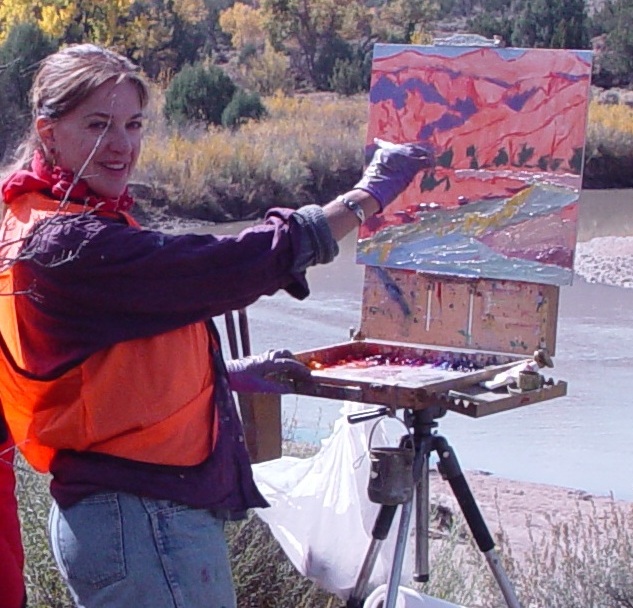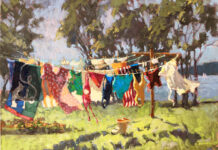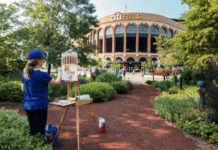BY MICHELLE CHRISMAN
I fully understand the necessity for an outdoor landscape “plein air” painter to have a thorough understanding of the “Language of the Visual World,” how light works in the outdoor world, the art of Impressionism. There are vast numbers of excellent artists who have mastered this language in paint.
For many years, I have visited group plein air landscape painting exhibits where the work looked as though it had all been done by the same, excellent artist.
In many of my workshops, participants ask me, “How do I find my own voice as an artist?” I recall my process in this area early on in my pursuit to become a professional, financially sustained artist. Every time I went out to paint, I said a simple prayer, “Lord, please show me what to paint, where to paint and how to paint.”
Second, I was wise enough to know NOT to take a workshop with an artist whose work I was not wild about. I did this once, only to have that instructor attempt to crush the colorist out of me. I dropped out of his class immediately.
Third, I decided to select what I call my “Mentors,” painters whose work I totally resonated with, all of whom had something about their work that really excited me, something that I wanted to incorporate into my work. I decided to choose six mentors, dead or alive. Then I taped my favorite painting of each around my bathroom mirror, a place where I spent time daily brushing my teeth, etc, where I could stare at and absorb what they were doing.
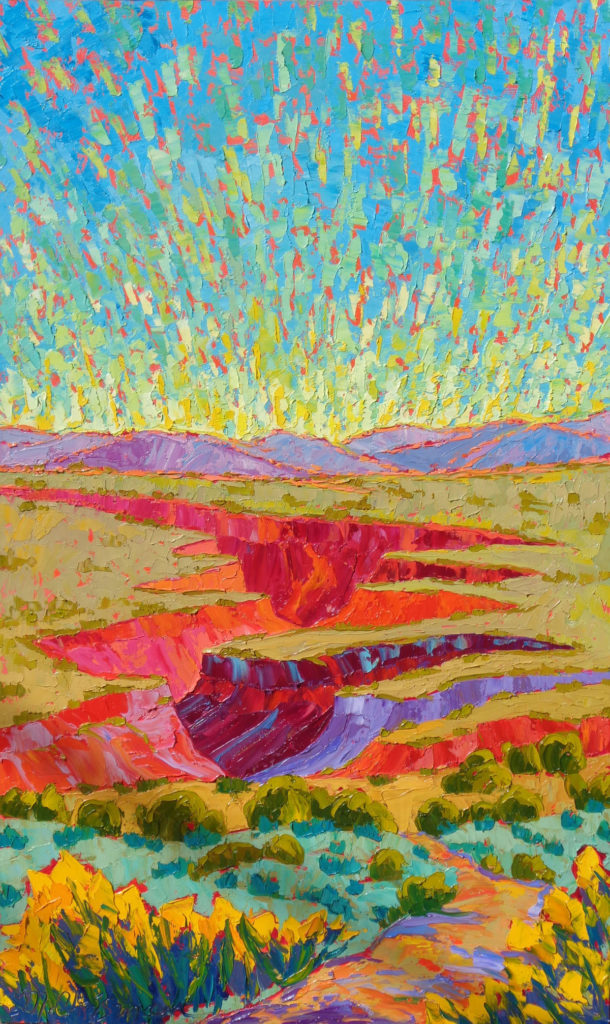
The following are my six mentors:
- Louisa McElwain
Louisa was a painter/friend of mine who had painted Northern New Mexico landscapes with enough frequency and intensity to have internalized it to the point where she was free to let her paint strokes burst with wild abandonment and passion. She took Impressionism further, into Expressionism. - Peggi Kroll-Roberts
Though Peggi is largely a figure painter, she exemplifies what I learned from Kevin MacPherson, “Do not paint ‘things,’ paint shapes and their values.” Peggi is a master of simplification, where the figure is not more important than the surrounding shapes. For me, she is also a Modernist and Colorist. - Dana Hooper
I once read a quote by Dana that said something like, “Great painting is skating on the edge of disaster.” Again, she is a master of simplified shapes and dynamic paint quality. That brings up the subject of SPEED in outdoor painting. I knew early on that I wanted to become so proficiently internalized in the academic language of the visual world, that I was then free to paint with such speed, that I was also “Skating on the edge of disaster.” - Wolf Kahn
I love his simplification and “Poetry Making” of the visual world. Most of his paintings are two complimentary colors, and he understood and explored “Spectral Light,” how light filters through the atmospheric spectrum and interprets it’s own language of the rainbow. This is a much more complex way of seeing than the use of the limited palette and local color. He understood what Monet did and he explored it. - Claude Monet
This master of spectral light painting, for example, spent years exploring how to use light to give the feeling, affect of the time of day, time of year, and weather condition. Example: his Haystack series. - Maynard Dixon
Being that I am a painter of the American Southwest, I am inspired by Dixon’s visually poetic desert compositions.
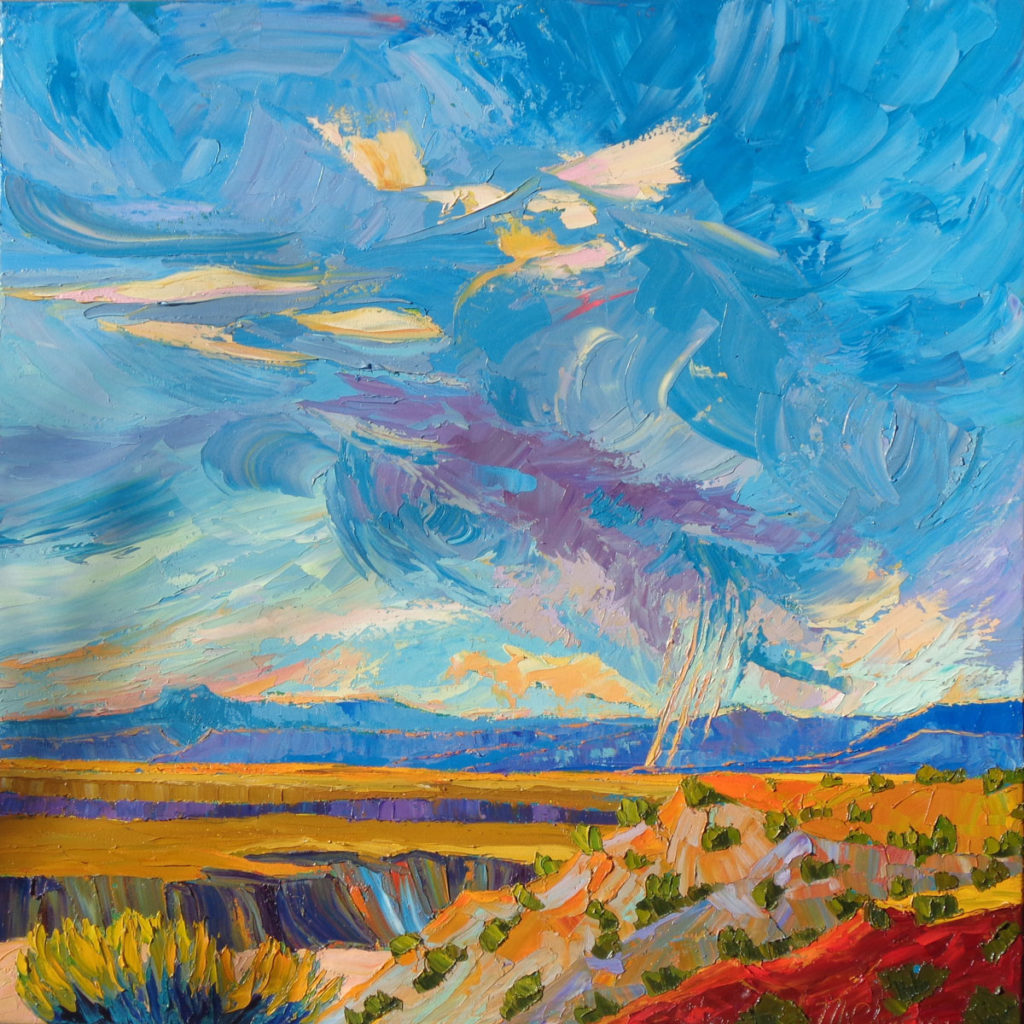
So, the above is what I tell my students in answer to their question, “How do I find my own voice as an artist?” There are so many academically suburb painters in the world, and it makes me sad when so many do not go beyond being “academically correct.” For me, that is only “the baking of the cake,” not the frosting. It undergirds great painting, but it is not exciting, explorative, risk-taking, expressive or visual poetry.
I hope that the above may also inspire the long-time, very successful painter to start pushing out of their safe boxes of known territory, and evolve over time to more visually risk-taking adventures.
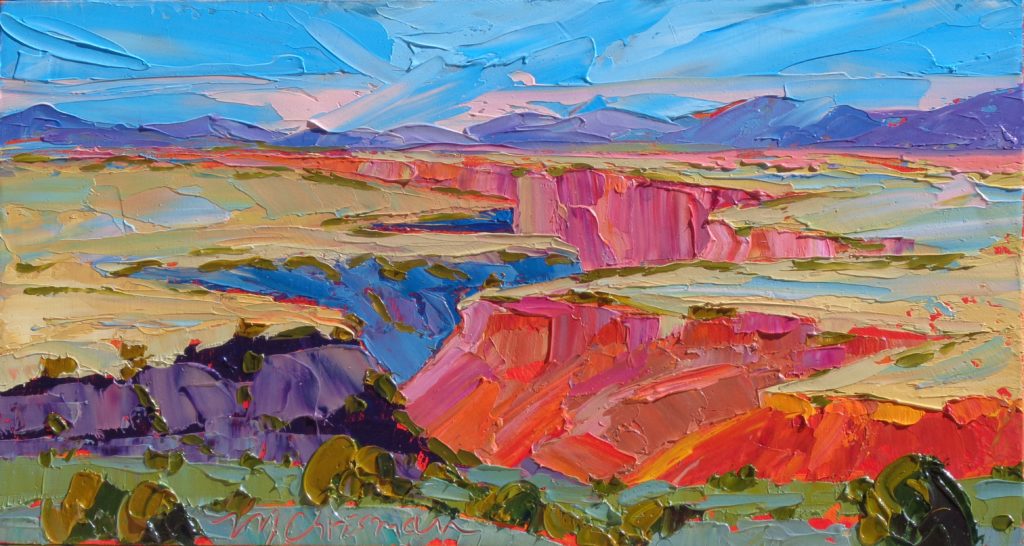
In Summary
- Pray for guidance.
- Become well-grounded in the principals of Impressionism, how light works in the outside world.
- Carefully select your six mentors.
- Paint with a painting buddy (one who does not talk while painting), and hold each other accountable for time restraints, being committed to cover the entire canvas and FINISH the painting, via speed, before packing up for the day. If painting alone, take a timer and stick to it. Never take a plein air painting back to the studio to scrub away at, killing it with every mindless dab.
My personal definition of true Plein air painting is the inhalation of the outdoor world and reining it in alike a wild horse onto your canvas, full of mystery and life!
Who are your painting mentors? Share with us in the comments below!
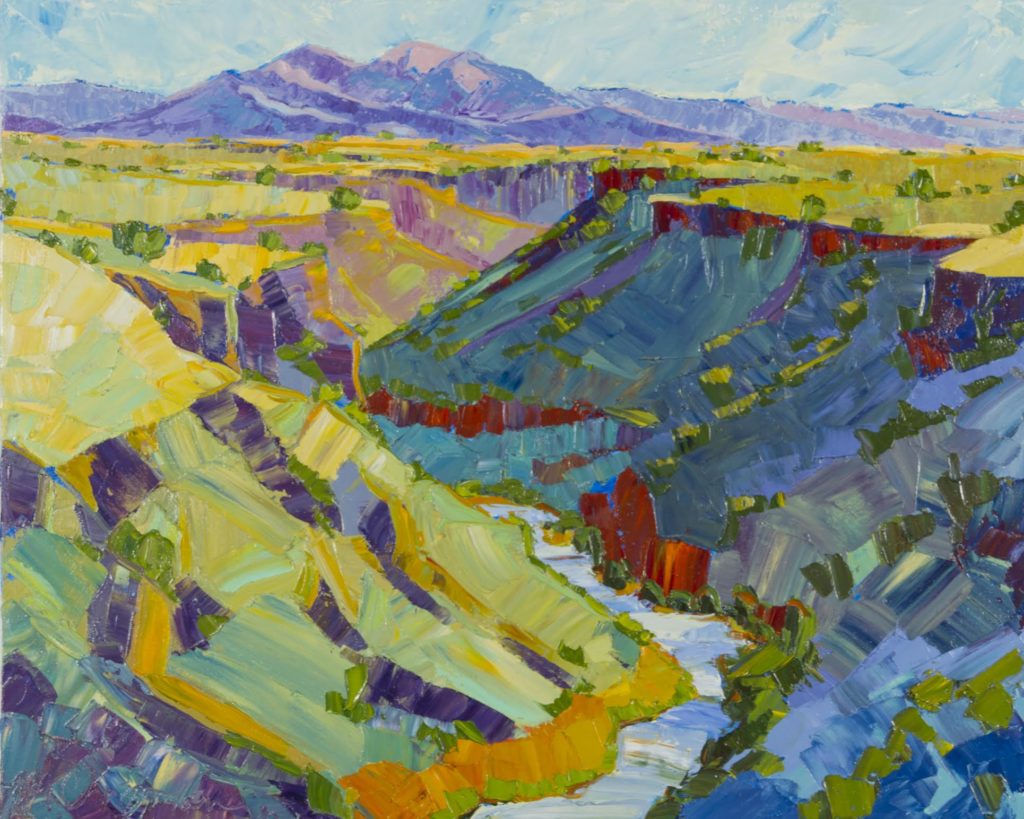
About Michelle Chrisman: As a Plein Air Painter of Northern New Mexico, I have been making a living as an oil painter for 17 years through gallery representation. I am an annual Plein Air Workshop Instructor at Ghost Ranch in Abiquiu, NM, as well as an instructor in Albuquerque for the Harwood Art Center. I also teach Private/Semi-Private plein air painting lessons in Taos, NM.
Upcoming Workshops: “How to Find Your Voice as an Artist,” May 7-10, 2021 and June 25-28, 2021 in Abiquiu, New Mexico
Website: www.MichelleChrisman.com
Check out the following amazing opportunities for learning with Streamline Publishing:
- April 15-17, 2021: 2nd Annual Plein Air Live virtual conference
- January 27-29, 2022: 2nd Annual Watercolor Live virtual conference
Book Your Early Bird Discount before 11:59pm PT on August 31 and Save Up to $600 Off the Full Rate
> Click here to subscribe to the free newsletter, Plein Air Today
> And click here to subscribe to PleinAir Magazine so you never miss an issue!

